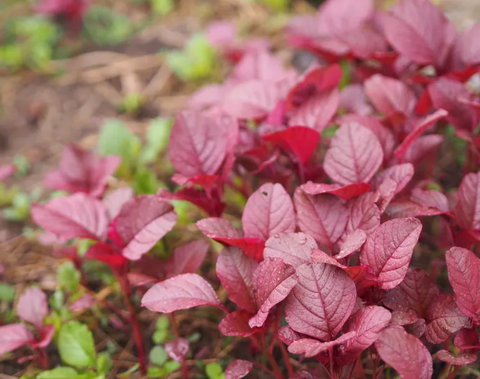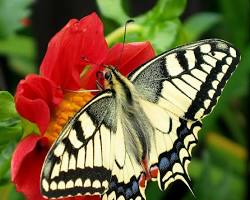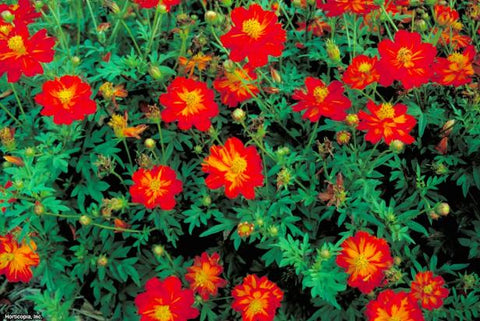Introduction
Welcome to the vibrant world of zinnia flowers, where an explosion of colors and an abundance of beauty await you. In this comprehensive guide, we'll delve into the fascinating history, diverse varieties, and practical aspects of growing zinnias in your garden. Whether you're a seasoned gardener or a novice enthusiast, zinnias are sure to captivate your imagination and add a touch of joy to your outdoor space.

The Fascinating History of Zinnia Flowers
Origins in Mexico and the Americas
Zinnias trace their roots back to Mexico and the Americas, where they have been cultivated for centuries. Indigenous peoples used zinnias for various purposes, including medicinal and ceremonial uses.
Discovery by European Explorers
European explorers were captivated by the beauty of zinnias when they encountered them during their expeditions to the New World. They brought zinnia seeds back to Europe, where they quickly gained popularity among garden enthusiasts.
Evolution from Medicinal Plant to Garden Favorite
Initially valued for their medicinal properties, zinnias eventually became prized for their ornamental value. Over time, breeders developed a wide range of zinnia varieties, each with its unique characteristics and appeal.
The Diversity of Zinnia Varieties
Zinnia elegans: Classic Garden Zinnias with Large, Vibrant Blooms
Zinnia elegans, also known as common zinnia, boasts large, showy blooms in an array of colors, including red, orange, pink, yellow, and white. These classic garden zinnias are a favorite choice for adding bold splashes of color to flower beds and borders.
Zinnia angustifolia: Compact, Heat-Tolerant Varieties Ideal for Borders and Containers
Zinnia angustifolia varieties are prized for their compact growth habit and heat tolerance, making them well-suited for borders, containers, and hot, sunny locations in the garden. Their dainty flowers come in shades of orange, yellow, and white.
Zinnia haageana: Charming, Daisy-Like Flowers in Warm, Autumnal Shades
Zinnia haageana, also known as Mexican zinnia, features charming, daisy-like flowers in warm, autumnal hues such as copper, apricot, and gold. These cheerful blooms add a touch of whimsy to garden borders and cottage-style plantings.

Growing Zinnia Flowers from Seed
Selecting High-Quality Zinnia Seeds
When selecting zinnia seeds, look for reputable seed suppliers that offer a wide range of varieties. Opt for fresh, high-quality seeds to ensure successful germination and robust plant growth.
Sowing Seeds Indoors vs. Direct Sowing in the Garden
Zinnias can be started from seed indoors several weeks before the last frost date or directly sown into the garden once the soil has warmed in the spring. Indoor sowing allows for earlier blooms, while direct sowing simplifies the planting process.
Ideal Soil Conditions and Planting Depth for Zinnias
Zinnias thrive in well-drained, fertile soil with a slightly acidic to neutral pH. Plant seeds at a depth of ¼ to ½ inch in loose, crumbly soil for optimal germination. Ensure adequate spacing between plants to allow for proper air circulation and growth.
Best Practices for Zinnia Care and Maintenance
Providing Ample Sunlight for Robust Growth and Flowering
Zinnias are sun-loving plants that require full sun to thrive and produce abundant blooms. Plant them in a location that receives at least 6 to 8 hours of direct sunlight per day for best results.
Watering Zinnias: Finding the Right Balance to Avoid Overwatering or Drought Stress
Maintain consistent soil moisture levels to prevent drought stress and encourage healthy growth. Water zinnias deeply and infrequently, allowing the soil to dry out slightly between waterings to prevent root rot and other moisture-related issues.
Deadheading Spent Blooms to Encourage Continuous Flowering
Regular deadheading is essential for prolonging the blooming period of zinnias. Remove faded flowers promptly to prevent seed formation and encourage the plant to redirect its energy into producing new blooms.

Companion Planting with Zinnias
Attracting Pollinators Such as Bees and Butterflies to the Garden
Zinnias are excellent companion plants for attracting pollinators such as bees, butterflies, and hummingbirds to the garden. Their bright, nectar-rich flowers provide a valuable food source for these beneficial insects.
Using Zinnias as Trap Plants to Deter Pests from Other Garden Crops
Zinnias can also serve as trap plants to lure pests away from other more valuable garden crops. Plant zinnias near susceptible plants to attract pests like aphids and caterpillars, reducing pest pressure on neighboring plants.
Pairing Zinnias with Complementary Plants for Visual Appeal and Ecosystem Support
Pair zinnias with complementary plants that share similar growing requirements and aesthetic qualities. Combine them with other annuals, perennials, and ornamental grasses to create harmonious plantings that enhance the overall beauty of the garden.
Zinnias in Floral Arrangements and Crafts
Harvesting Zinnias at the Peak of Freshness for Long-Lasting Bouquets
For the best vase life, harvest zinnia blooms early in the morning when they are fully hydrated. Choose flowers that are just beginning to open and remove any foliage below the water line to prevent bacterial growth.
Creative Uses for Zinnias in Wreaths, Garlands, and Dried Flower Arrangements
Zinnias are versatile flowers that can be used in a variety of floral arrangements and crafts. Incorporate dried zinnia blooms into wreaths, garlands, and crafts to add a pop of color and texture to your home decor.
Preserving Zinnia Blooms Through Drying and Pressing Techniques
To preserve zinnia blooms for future use in crafts or arrangements, consider drying or pressing them. Hang freshly harvested zinnia stems upside down in a dry, well-ventilated area until fully dried, or press them between layers of absorbent paper until flattened.
Overcoming Common Zinnia Growing Challenges
Dealing with Pests Such as Aphids, Spider Mites, and Powdery Mildew
Zinnias are susceptible to various pests and diseases, including aphids, spider mites, and powdery mildew. Monitor plants regularly for signs of infestation, and take prompt action to control pests using organic methods such as insecticidal soap or neem oil.
Addressing Issues with Soil Drainage, Nutrient Deficiencies, and Environmental Stress
Poor soil drainage, nutrient deficiencies, and environmental stress can also impact the health and vigor of zinnia plants. Amend heavy clay soils with organic matter to improve drainage, and fertilize plants regularly with a balanced fertilizer to ensure they have access to essential nutrients.
Strategies for Preventing Fungal Diseases and Promoting Overall Plant Health
To prevent fungal diseases such as powdery mildew and damping off, provide good air circulation around zinnia plants by spacing them adequately and avoiding overhead watering. Apply a preventive fungicide if necessary, and remove and destroy infected plant material to prevent the spread of disease.

Zinnias: A Symbol of Summer and Joy
Capturing the Essence of Summer with Vibrant Zinnia Blooms
Zinnias epitomize the essence of summer with their bright, cheerful blooms and abundant flowers. Whether planted in formal garden beds or informal cottage-style plantings, zinnias bring a sense of joy and vitality to any outdoor space.
Creating Cheerful Garden Displays That Lift the Spirits of Passersby
Brighten up your garden and lift the spirits of passersby by incorporating zinnias into your landscape design. Plant them in mixed borders, containers, or cutting gardens where their colorful blooms can be enjoyed up close or from a distance.
Celebrating the Simple Beauty and Resilience of Zinnias in the Garden
Above all, zinnias are celebrated for their simple beauty and resilience in the garden. They require minimal care and maintenance, yet they reward gardeners with a profusion of blooms throughout the growing season, making them a delightful addition to any garden space.
Conclusion
In conclusion, zinnia flowers are a versatile and rewarding addition to any garden, offering a myriad of colors, shapes, and sizes to suit every gardener's taste and style. Whether grown for their vibrant blooms, their ability to attract pollinators, or their versatility in floral arrangements and crafts, zinnias are sure to bring color and beauty to your garden all season long. So why not plant a few zinnia seeds and watch as these charming flowers transform your outdoor space into a vibrant oasis of color and joy?
Welcome to the vibrant world of zinnia flowers, where an explosion of colors and an abundance of beauty await you. In this comprehensive guide, we'll delve into the fascinating history, diverse varieties, and practical aspects of growing zinnias in your garden. Whether you're a seasoned gardener or a novice enthusiast, zinnias are sure to captivate your imagination and add a touch of joy to your outdoor space.

The Fascinating History of Zinnia Flowers
Origins in Mexico and the Americas
Zinnias trace their roots back to Mexico and the Americas, where they have been cultivated for centuries. Indigenous peoples used zinnias for various purposes, including medicinal and ceremonial uses.
Discovery by European Explorers
European explorers were captivated by the beauty of zinnias when they encountered them during their expeditions to the New World. They brought zinnia seeds back to Europe, where they quickly gained popularity among garden enthusiasts.
Evolution from Medicinal Plant to Garden Favorite
Initially valued for their medicinal properties, zinnias eventually became prized for their ornamental value. Over time, breeders developed a wide range of zinnia varieties, each with its unique characteristics and appeal.
The Diversity of Zinnia Varieties
Zinnia elegans: Classic Garden Zinnias with Large, Vibrant Blooms
Zinnia elegans, also known as common zinnia, boasts large, showy blooms in an array of colors, including red, orange, pink, yellow, and white. These classic garden zinnias are a favorite choice for adding bold splashes of color to flower beds and borders.
Zinnia angustifolia: Compact, Heat-Tolerant Varieties Ideal for Borders and Containers
Zinnia angustifolia varieties are prized for their compact growth habit and heat tolerance, making them well-suited for borders, containers, and hot, sunny locations in the garden. Their dainty flowers come in shades of orange, yellow, and white.
Zinnia haageana: Charming, Daisy-Like Flowers in Warm, Autumnal Shades
Zinnia haageana, also known as Mexican zinnia, features charming, daisy-like flowers in warm, autumnal hues such as copper, apricot, and gold. These cheerful blooms add a touch of whimsy to garden borders and cottage-style plantings.

Growing Zinnia Flowers from Seed
Selecting High-Quality Zinnia Seeds
When selecting zinnia seeds, look for reputable seed suppliers that offer a wide range of varieties. Opt for fresh, high-quality seeds to ensure successful germination and robust plant growth.
Sowing Seeds Indoors vs. Direct Sowing in the Garden
Zinnias can be started from seed indoors several weeks before the last frost date or directly sown into the garden once the soil has warmed in the spring. Indoor sowing allows for earlier blooms, while direct sowing simplifies the planting process.
Ideal Soil Conditions and Planting Depth for Zinnias
Zinnias thrive in well-drained, fertile soil with a slightly acidic to neutral pH. Plant seeds at a depth of ¼ to ½ inch in loose, crumbly soil for optimal germination. Ensure adequate spacing between plants to allow for proper air circulation and growth.
Best Practices for Zinnia Care and Maintenance
Providing Ample Sunlight for Robust Growth and Flowering
Zinnias are sun-loving plants that require full sun to thrive and produce abundant blooms. Plant them in a location that receives at least 6 to 8 hours of direct sunlight per day for best results.
Watering Zinnias: Finding the Right Balance to Avoid Overwatering or Drought Stress
Maintain consistent soil moisture levels to prevent drought stress and encourage healthy growth. Water zinnias deeply and infrequently, allowing the soil to dry out slightly between waterings to prevent root rot and other moisture-related issues.
Deadheading Spent Blooms to Encourage Continuous Flowering
Regular deadheading is essential for prolonging the blooming period of zinnias. Remove faded flowers promptly to prevent seed formation and encourage the plant to redirect its energy into producing new blooms.

Companion Planting with Zinnias
Attracting Pollinators Such as Bees and Butterflies to the Garden
Zinnias are excellent companion plants for attracting pollinators such as bees, butterflies, and hummingbirds to the garden. Their bright, nectar-rich flowers provide a valuable food source for these beneficial insects.
Using Zinnias as Trap Plants to Deter Pests from Other Garden Crops
Zinnias can also serve as trap plants to lure pests away from other more valuable garden crops. Plant zinnias near susceptible plants to attract pests like aphids and caterpillars, reducing pest pressure on neighboring plants.
Pairing Zinnias with Complementary Plants for Visual Appeal and Ecosystem Support
Pair zinnias with complementary plants that share similar growing requirements and aesthetic qualities. Combine them with other annuals, perennials, and ornamental grasses to create harmonious plantings that enhance the overall beauty of the garden.
Zinnias in Floral Arrangements and Crafts
Harvesting Zinnias at the Peak of Freshness for Long-Lasting Bouquets
For the best vase life, harvest zinnia blooms early in the morning when they are fully hydrated. Choose flowers that are just beginning to open and remove any foliage below the water line to prevent bacterial growth.
Creative Uses for Zinnias in Wreaths, Garlands, and Dried Flower Arrangements
Zinnias are versatile flowers that can be used in a variety of floral arrangements and crafts. Incorporate dried zinnia blooms into wreaths, garlands, and crafts to add a pop of color and texture to your home decor.
Preserving Zinnia Blooms Through Drying and Pressing Techniques
To preserve zinnia blooms for future use in crafts or arrangements, consider drying or pressing them. Hang freshly harvested zinnia stems upside down in a dry, well-ventilated area until fully dried, or press them between layers of absorbent paper until flattened.
Overcoming Common Zinnia Growing Challenges
Dealing with Pests Such as Aphids, Spider Mites, and Powdery Mildew
Zinnias are susceptible to various pests and diseases, including aphids, spider mites, and powdery mildew. Monitor plants regularly for signs of infestation, and take prompt action to control pests using organic methods such as insecticidal soap or neem oil.
Addressing Issues with Soil Drainage, Nutrient Deficiencies, and Environmental Stress
Poor soil drainage, nutrient deficiencies, and environmental stress can also impact the health and vigor of zinnia plants. Amend heavy clay soils with organic matter to improve drainage, and fertilize plants regularly with a balanced fertilizer to ensure they have access to essential nutrients.
Strategies for Preventing Fungal Diseases and Promoting Overall Plant Health
To prevent fungal diseases such as powdery mildew and damping off, provide good air circulation around zinnia plants by spacing them adequately and avoiding overhead watering. Apply a preventive fungicide if necessary, and remove and destroy infected plant material to prevent the spread of disease.

Zinnias: A Symbol of Summer and Joy
Capturing the Essence of Summer with Vibrant Zinnia Blooms
Zinnias epitomize the essence of summer with their bright, cheerful blooms and abundant flowers. Whether planted in formal garden beds or informal cottage-style plantings, zinnias bring a sense of joy and vitality to any outdoor space.
Creating Cheerful Garden Displays That Lift the Spirits of Passersby
Brighten up your garden and lift the spirits of passersby by incorporating zinnias into your landscape design. Plant them in mixed borders, containers, or cutting gardens where their colorful blooms can be enjoyed up close or from a distance.
Celebrating the Simple Beauty and Resilience of Zinnias in the Garden
Above all, zinnias are celebrated for their simple beauty and resilience in the garden. They require minimal care and maintenance, yet they reward gardeners with a profusion of blooms throughout the growing season, making them a delightful addition to any garden space.
Conclusion
In conclusion, zinnia flowers are a versatile and rewarding addition to any garden, offering a myriad of colors, shapes, and sizes to suit every gardener's taste and style. Whether grown for their vibrant blooms, their ability to attract pollinators, or their versatility in floral arrangements and crafts, zinnias are sure to bring color and beauty to your garden all season long. So why not plant a few zinnia seeds and watch as these charming flowers transform your outdoor space into a vibrant oasis of color and joy?









